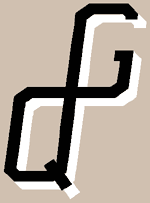1⁄35Making Custom Decals
I make significant use of a scanner to create the initial designs for my decals
by scanning photographs and/or drawings. Once scanned, I pull the images into
one of the above mentioned software products to clean up the art and adjust it
as needed to create clean, printable designs.
When creating the designs, I keep in mind my intentions for using them. As such, I do not place the designs too close together, making them difficult to cut apart and use. Equally, I do not separate them too much, which will waste decal film. To find a happy medium, I experimented with this until I got a feel for the space I needed to leave in the master image between designs.
 For text in the markings (letters and numbers), I have a couple PC fonts I
purchased that provide both US Air Force and US Navy styles of block lettering.
I purchased these at TLai
Enterprises. This simplifies creating tail codes and modex numbering as I
can just key in the characters from the keyboard and get the completed designs.
All I need to do is work out the correct size of the writing.
For text in the markings (letters and numbers), I have a couple PC fonts I
purchased that provide both US Air Force and US Navy styles of block lettering.
I purchased these at TLai
Enterprises. This simplifies creating tail codes and modex numbering as I
can just key in the characters from the keyboard and get the completed designs.
All I need to do is work out the correct size of the writing.
The designs I am creating are always quite a bit larger than the decals I want in the end. By working in extremely large sizes, I can reduce the images during printing and minimize any irregularities. The digital nature of the PC makes the edges of diagonal designs appear as jagged lines. The reduction of the designs in printing mostly eliminates these jagged edges and prints a smooth line.
To see just how big the master images are that I work on, note the image to the right. This is the left side QG tail code for the A-4E Skyhawk. The jagged edges of this source image smooth out when printed at a reduction to 16% of the original artwork. Note the tail of the completed model, below.
When creating the designs, I keep in mind my intentions for using them. As such, I do not place the designs too close together, making them difficult to cut apart and use. Equally, I do not separate them too much, which will waste decal film. To find a happy medium, I experimented with this until I got a feel for the space I needed to leave in the master image between designs.
 For text in the markings (letters and numbers), I have a couple PC fonts I
purchased that provide both US Air Force and US Navy styles of block lettering.
I purchased these at TLai
Enterprises. This simplifies creating tail codes and modex numbering as I
can just key in the characters from the keyboard and get the completed designs.
All I need to do is work out the correct size of the writing.
For text in the markings (letters and numbers), I have a couple PC fonts I
purchased that provide both US Air Force and US Navy styles of block lettering.
I purchased these at TLai
Enterprises. This simplifies creating tail codes and modex numbering as I
can just key in the characters from the keyboard and get the completed designs.
All I need to do is work out the correct size of the writing. The designs I am creating are always quite a bit larger than the decals I want in the end. By working in extremely large sizes, I can reduce the images during printing and minimize any irregularities. The digital nature of the PC makes the edges of diagonal designs appear as jagged lines. The reduction of the designs in printing mostly eliminates these jagged edges and prints a smooth line.
To see just how big the master images are that I work on, note the image to the right. This is the left side QG tail code for the A-4E Skyhawk. The jagged edges of this source image smooth out when printed at a reduction to 16% of the original artwork. Note the tail of the completed model, below.
Copyright ©2021 by David W. Aungst. Images and/or videos also by copyright holder unless otherwise noted. The views and opinions expressed herein are solely the views and opinions of the authors and/or contributors to this Web site and do not necessarily represent the views and/or opinions of KitMaker Network, KitMaker Network, or Silver Star Enterrpises. All rights reserved.








